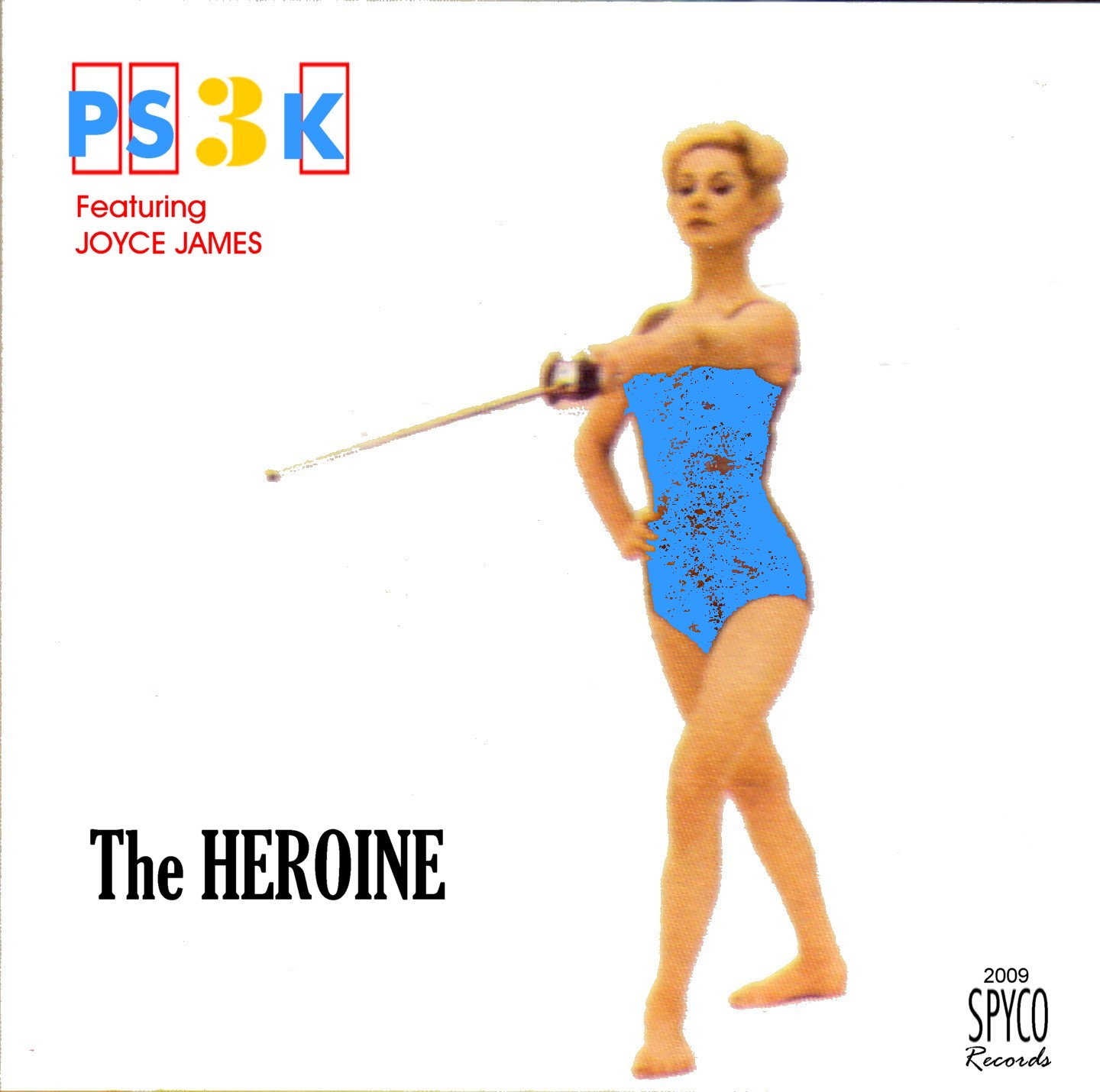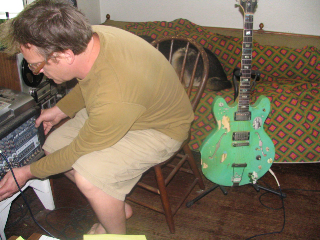Tilting at Windmills in St. Cloud
Writer Jennifer Kohnhorst profiles an intriguing, talented musician in St. Cloud--a one-man creative dynamo whose audience size has yet to catch up to his talent. Read on for Ganderson's story and to lend your ears to his appealingly quirky take on pop.







A DETOUR TAKES ME DOWN DIVISION STREET — that gleaming, steaming strip of mainstream consumer claptrap that, indeed, runs like a division through the center of St Cloud. The nondescript cityscape is a fair representation of musical tastes here too, I think, as I turn off to meet my interview subject: commodified, familiar, and generally bland. The music scene here revolves around tribute bands that, while featuring incredibly talented musicians, rarely present anything but a virtuoso live show disguised as comfort food. It makes you feel good, and it’s pulled off competently, but it’s nothing new. It’s easy to see why an artist like Ganderson (a.k.a. Doug Anderson) doesn’t really enjoy what one would call a following here.
Yet there he is, in his living room studio, recording in his pajamas, invigorated and exhausted by a day of writing. He is coming on to a fruitful period, he says — the creative window is open, and he’s trying to make the most of it before it slams shut. Today, he’s recording music under the name PS3K (PantSuit 3000). (Check out the song “Bitten by the Bug” at the top of the page, from his new PS3K album, The Heroine.)
Since Ganderson started making music in 1979, he’s gone by too many aliases to mention, depending on instrumentation, collaborators, and outside influences of the moment. In the late ’80s and early ’90s, he played out more, made the scene. He mouthed off to the cops and antagonized crowds of hippies as the guitarist and front-man for a handful of bands with music described by one bystander as simply “lewd” – a term he admits is a fairly accurate accounting of kind of thing he was doing back then.
We talk a little about the St Cloud music scene as it was when he was last a part of it, around 1987; Ganderson seems to surprise himself, remembering that it was “pretty cool, in its day. There a little bit of an underground scene, with bands like Four Nice Men and The Vibes — it had this really weird-ass beat.” Later he adds, “It was just a flare, though; there was nothing with lasting impact, but we weren’t trying to be Minneapolis. Actually, we were just St Cloud, as ashamed as maybe I should be to say that. And the music was pretty cool — it just didn’t go anywhere.”
______________________________________________________
What I hear is rangy and moody and enjoyably weird — Ganderson’s take on a pop song.
______________________________________________________
These days, he doesn’t play live shows much. He prefers an audience of one, a German Shepherd mix, named Otto. Otto is indifferent to the bass line that opens up the latest track, clubby without being bouncy, and slightly sinister — it’s a sound produced by synthesizers, run through guitar amps with effects. Then the vocals tumble over, breathy but clear. Ganderson’s voice has a gummy elasticity he bends to suit a ridiculous panoply of styles. A break in the song is punctuated by a sound-effects recording of footsteps in full stereo surround, launching abruptly into the bridge — upbeat and discordant. It’s rangy and moody and enjoyably weird — what he considers a pop song. (You can hear the finished song yourself: see above, “Queen Mariposa’s Dream”.)
Ganderson tells me writing the perfect pop song is his “Man of La Mancha.” “My whole deal has been sitting alone in a room and challenging myself to make up a song on the spot — awaking one day, where no song exists, and by six o-clock that evening (which is usually how long it takes) there it is — it’s kind of exciting. Especially doing the first two tracks of a new song, that’s the best.”
He sounds like an eight-year-old talking about the new bike he got for Christmas — a shiny new bicycle, a gift he unwraps slowly as the day goes on. Ganderson starts with a sample from a movie or record, stalking the floor, singing the parts, mixing, adding, erasing what doesn’t work. Ganderson records onto a hard drive that functions like a four track — a Port-o-studio — a set-up he likes for its simplicity and immediacy. He plays whatever he can get his hands on.
When I put on one of his songs for a friend, the first thing they always say is, “He did this in his living room?” First-time listeners are almost always surprised that the songs are actually good. I think we’re trained to believe that talented people always, somehow, find success, and that success is measured in mass appeal, some discernible level of fame. I ask Ganderson how many people hear a given recording, and in mock dejection he notes that his “numbers are down.” He just distributes copies to friends he thinks will like it.
I ask him if it matters to him who hears his music. With a shy ambivalence, he admits, “Kinda.”
______________________________________________________
We’re trained to believe that talented people always, somehow, find success, and that success is measured in mass appeal, some discernible level of fame.
______________________________________________________
Though he doesn’t crave commercial success at the rock-star level, he wouldn’t mind it if more, say 300 or 400 people, heard his records. “Then I feel like it would be worth it to get up in the morning and do this shit,” he says.
I point out that he, obviously, does think it’s worth the effort, or he wouldn’t be doing it — even if there are only a half dozen people listening. Quickly, bluntly he replies, “What else am I gonna do?” Is that what motivates him? “Sometimes, yeah,” he says. “That, and it’s fun.” When he says “fun,” this time, his voice sounds less like the eight-year-old with a shiny new bike, and more like a thief who’s made off with the diamonds and the girl.
You can listen if you want — he certainly wouldn’t mind. But he’s the one getting away with something. It’s his gift.
*****
About the author: Jennifer Kohnhorst writes sparkling body copy and headlines that really sell for a living. But she’d prefer to write about brilliant art and artists that no one knows or cares about – yet. (If you have a story idea for her, especially about the goings-on in and around St. Cloud, she’d love to hear it; email her your tips at jkohnhorst (at) gmail (dot) com.) She lives with her family in St Cloud, Minnesota.